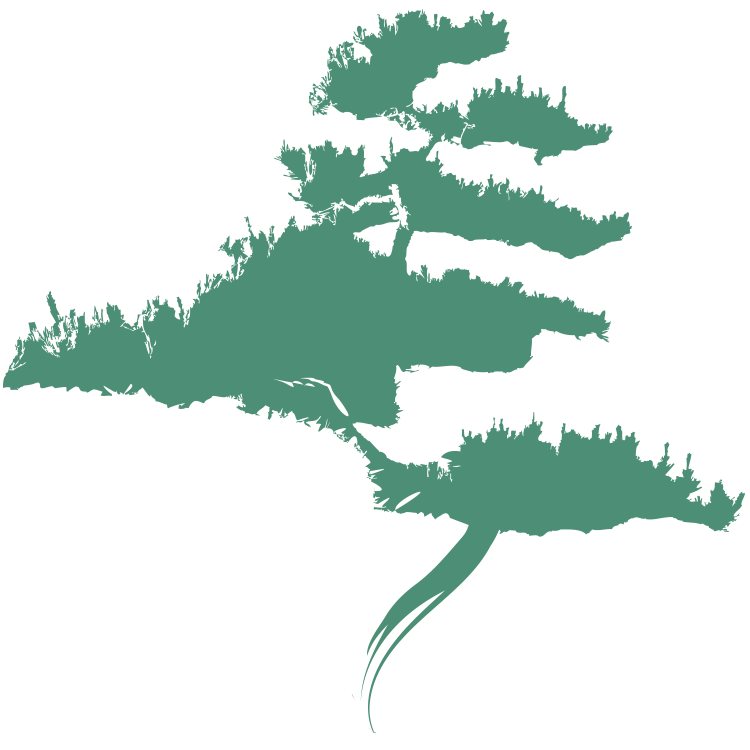A STORY OF FRIENDSHIP
The USS Walke, Mitoko Yamachi, and the Cherry Trees in the Japanese Friendship Garden & Museum: How Are these Connected?
By Mark Halverson
Introduction
On 12 June 1951, during the Korean War, a US Navy destroyer hit a mine off the coast of Korea. This ship, the USS Walke (DD-723), was severely damaged and 26 men were killed and 40 were injured in the incident. The ship’s commanding officer, Marshall Thompson, bravely prevented the ship from sinking and conducted rescue operations to save what he could of the crew. The USS Walke limped to Sasebo, Japan for repairs. While there, the dispirited crew met a young 14 year old Japanese student named Mitoko, whose parents were killed by the atomic bomb in Nagasaki. Times were hard and money was tight, such that the bright and happy orphan girl would have had to drop out of school in order to support herself by working in the fields.
As the crew learned of Mitoko’s circumstances and her desire for learning, under the leadership of their skipper, Marshall Thompson, funds for Mitoko were collected from the Walke’s officers and crew.
How does this relate to the cherry trees at the Japanese Friendship Garden and Museum in San Diego, California?
Reunion
When the ship was ready to depart, the money for Mitoko’s scholarship was placed into a bank account for Mitoko, and the crew returned to its duties on the USS Walke. The crew, and Marshall Thompson, were fully occupied with their duties, and as time passed they eventually lost all contact.
Captain Marshall Thompson retired in San Diego. However, with time his fond memories of Japan led him to thoughts of that little orphan girl. What had become of her? How could he re-establish contact? With the help of Mrs. Ohara, whom Marshall Thompson met at a public demonstration of the traditional Japanese tea ceremony, contact with Mitoko was re-established. By this time, Mitoko was a successful nurse working for the Red Cross, and was married. They had a grown son and daughter.
In August of 1993, after 42 years, Mitoko and her husband reunited at the Japanese Friendship Garden and Museum in San Diego for a reunion with Captain Thompson and several of the USS Walke shipmates. In his interview with a television reporter at the officers’ club at the Naval base in San Diego, Captain Thompson said, “We did not help Mitoko by paying for her scholarship. In fact, she is the one who helped us. She had been orphaned and yet, she was always there to cheer up the dispirited officers with a smile and her unstoppable optimism.” Mitoko and her husband returned several times to San Diego for reunions, for Captain Thompson’s funeral, and for the 50th anniversary memorial services of the Walke incident in 2001.
The Legend Grows
After the dramatic reunion in 1993, Mitoko was moved to write a book about this story, wherein she describes her personal experiences and the change to her life that was brought about by the selfless acts of the crew of the USS Walke. At the center of this was the leadership of Captain Marshall Thompson, a man who was somehow larger than life. The book became popular in Japan, and was used throughout the country as a symbol of the friendship between the Japanese and American people. That book eventually became required reading at the Japanese Naval Academy as a model of a Naval officer’s courage, vision, and leadership.
In Mitoko’s book, she talks about the cherry trees that bloom each spring at the Japanese Friendship Garden and Museum in Balboa Park, San Diego, and how she donated money to help make them possible. She mentions with strong emotion how these cherry trees are symbols of the lasting friendship between the Japanese and American people, and especially of the bond that she has with the crew of the USS Walke.
A Chance Meeting
Now fast-forward to 12 June 2011, 60 years to the day after that fateful event off the coast of Korea. John Henderson and Guy Willis, two former crewmembers of the USS Walke arrived at the Japanese Friendship Garden and Museum in San Diego to see “Mitoko’s Cherry Trees” and pay their respects to Captain Marshall Thompson, whose name is listed on a marble plaque within the garden. By chance, they bumped into volunteer docent, Mark Halverson. Mark had never heard of the Mitoko story, but promised to research the historical background of the Japanese Friendship Garden and Museum, Marshall Thompson, Mitoko, and the cherry trees.
Considerable digging and assistance from the Japanese Friendship Garden and Museum staff were required. Guy Willis and Mark Halverson remained in contact and regularly exchanged information. Finally, after many months of research, we now know how it all came together.
How the Cherry Trees Came to Be
By the late 1990’s, the Japanese Friendship Garden & Museum in San Diego decided to incorporate cherry trees in the Garden. However, there were challenges. First, cherry trees won’t blossom reliably in San Diego’s coastal climate. Second, additional funding was needed to purchase hundreds of special cherry trees. The first challenge was solved after a great deal of effort by developing a double hybrid graft cherry tree that would blossom reliably in San Diego’s coastal climate.
The second challenge, raising the funds for 200 of these unique and very special cherry trees, proved to be just as difficult. Many people donated funds, most notably Moto Asakawa. Mitoko and Marshall Thompson’s widow also contributed to this effort.
Every year these special trees blossom, reminding everyone of that special relationship between the Japanese and American people, and in particular, of the story of the Japanese orphan girl and the crew of the USS Walke.
